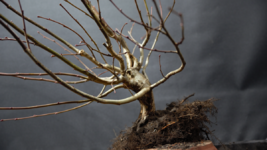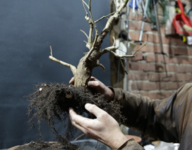I have recently been watching a lot of the Nursery stock to Bonsai 'makeovers' where the tree is significantly pruned, often bare rooted and repotted with simultaneous root pruning. All done by reputable and experienced professionals.
I am curious to see what people think about such heavy projects, which seem to be breaking all possible tree maintenance rules such as 'never prune repot at the same time', 'never prune more than 20% foliage at one time' and the list goes on.
Taking things from that point of view, those trees have no chance of survival yet they live and do well.
I am curious to see what people think about such heavy projects, which seem to be breaking all possible tree maintenance rules such as 'never prune repot at the same time', 'never prune more than 20% foliage at one time' and the list goes on.
Taking things from that point of view, those trees have no chance of survival yet they live and do well.


